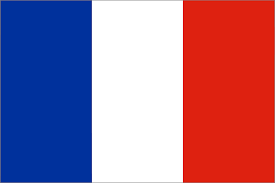The French broadband market is dominated by the incumbent France Telecom (FT, 42.8% market share) and alternative DSL operators Iliad (Free) (21.8%) and SFR (22.8%). Numericable, the single cable operator, has a 4.2% share of the broadband market. Smaller operators, including Bouygues Telecom, share the remaining 7.3% of broadband subscribers. The three main operators – FT, Iliad and SFR – have launched fibre-based services in the last three years.1
The regulator, ARCEP, has published a number of rulings relating to the FTTx market. It has granted alternative operators equal access rights to FT’s duct network, and has also mandated the provision of a shared access point in buildings, which is available to all operators.
The aim is to allow fair infrastructure competition among fibre access operators without duplication of the inbuilding/terminating segment. Volume-based access pricing is also enforced in densely populated areas, and ARCEP is also considering access regulation of overhead infrastructure such as poles. In less populated areas, flat-based pricing has been implemented.
Any operator may request, by the start of a fibre project, that the ‘building operator’ (i.e. the telecoms
operator appointed by the landlord to install fibre infrastructure) installs an additional dedicated fibre to each
unit. ARCEP has stated that an operator that requests additional fibre must share the installation costs with
the building operator2. This multi-fibre obligation applies to populous areas (Zone 1 cities).
In December 2009, the French Government announced its National Ultra-Fast Broadband Programme that is proposed to deliver 100Mbps broadband to 70% of homes by 2020 and universal coverage by 20253. The Government has pledged USD2.7 billion to help achieve this target. As commercial operators will target the densely populated regions, the Government has focused its funds on the less populated areas. It has committed the USD2.7 billion to local authorities and operators for FTTH roll-out, and provides advisory support.
As a result of the high deployment costs, co-funding agreements have been established among the operators. FT, Iliad and SFR have agreed to co-finance roll-out in moderately populated areas (Zone 2). In July 2011, FT and Iliad also agreed to co-fund the roll-out in less densely populated areas. More recently, in November 2011, FT and SFR agreed to share the deployment of fibre to the areas that are not very densely populated. This is a significant move, since 9.8 million of the 11 million households in these areas were to be served by fibre networks from both FT and SFR. Under the November 2011 agreement, SFR will serve 2.3 million households and FT the remaining 7.5 million, thereby removing the network duplication. As per ARCEP regulations, access to both networks must be provided to all other market players.
Current and planned FTTx deployments
France Telecom conducted a successful FTTH GPON pilot which ran from June 2006 to February 2007, and covered 14 000 homes across six districts of Paris and five provincial cities. FT acquired 1000 customers, representing a population penetration of 7%. With the subsequent commercial launch, FT plans to deploy FTTH to 3600 communes (10 million households) by 2015 and to 15 million households by 2020, in conjunction with other operators (see above). By June 2011, FT had passed 819 000 homes with FTTH4. Leading altnet Iliad (Free) is rolling out FTTH using Ethernet over a P2P fibre architecture. It has plans to connect 4 million homes by 2012, and had passed 450 000 by June 20115.
SFR has launched FTTH services using both GPON check and P2P architectures: “Rather than adopting a blanket approach to fibre, we have chosen to make our deployment decisions on a local, case-by-case basis, alternating between GPON and P2P Ethernet.”6 By June 2011, fibre was available to 550 000 homes7. SFR intends to expand its fibre coverage to 30 cities by the end of 2011 and SFR has made agreements with FT extend its fibre roll-out to less densely populated areas (see above).
Architecture, configuration, equipment and costs
FT is using two 1:8 splitters (or a 1:8 splitter followed by a 1:4 splitter), giving a maximum split ratio of 1:64.
FT will also consider the use of 1:32 individual splitters. Each FT OLT laser has the capability to supply 64 subscribers.
FT’s 2006–7 trial incurred total capex of less than USD6 million, an average of USD430 per home passed8. To achieve its 10 million household coverage by 2015, FT plans to invest around USD2.68 billion9,10. This budget is expected to be enhanced by partnerships to an actual total investment budget of EUR4 billion (USD5.35 billion)11. This suggests a capex per home of USD535. SFR intends to spend EUR250 million per year until 2014 on its fibre roll-out, including expansion to 30 French cities.
Iliad (Free) plans to spend USD1.3 billion on its FTTH roll-out by 2012, by which time it expects to have connected 4 million homes. This equates to an average capex of USD325 per home passed.